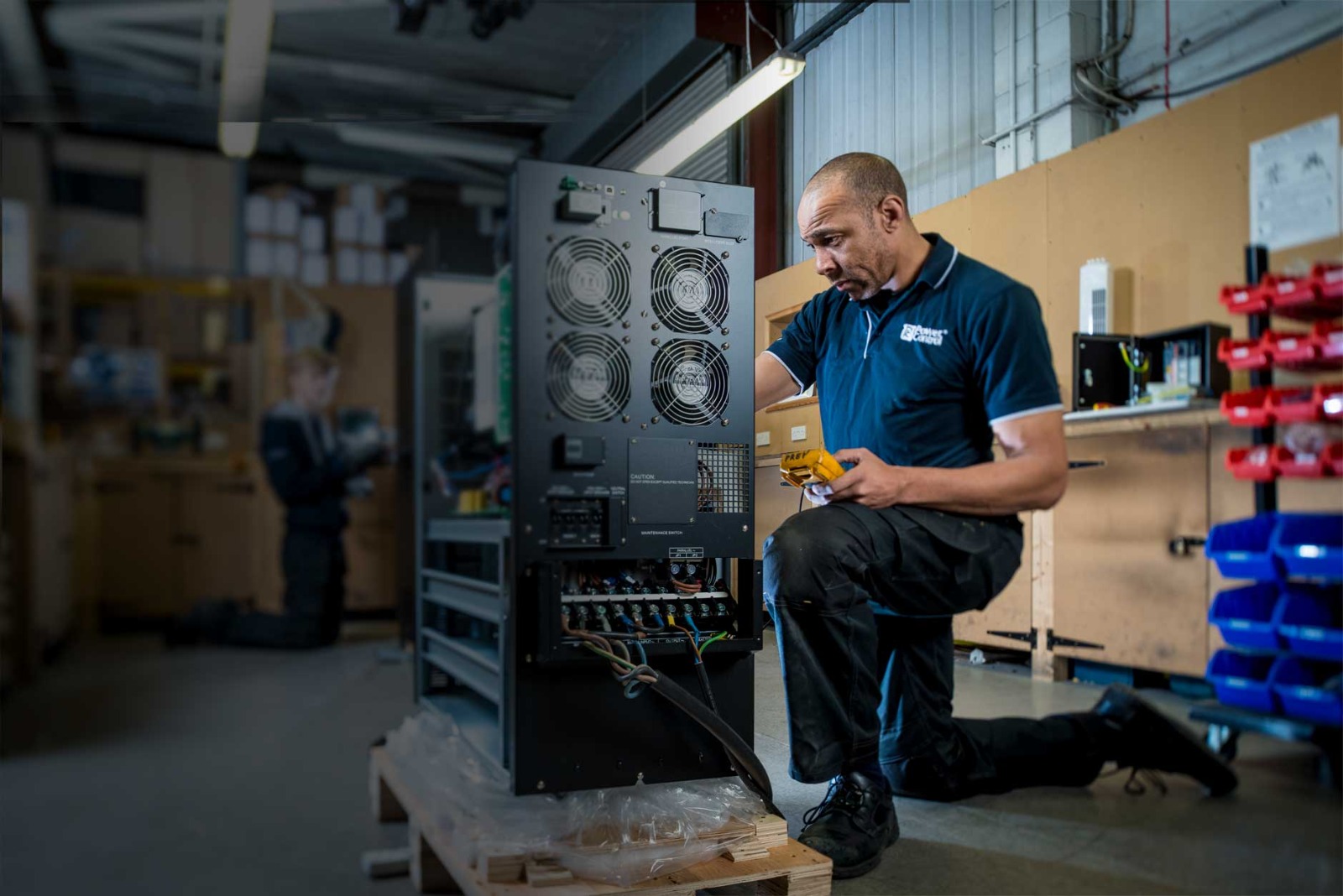Why UPS Maintenance Bypass is Critical for Business Continuity

Strong 8k brings an ultra-HD IPTV experience to your living room and your pocket.
Reliable power is the backbone of modern business operations, ensuring systems remain online without disruption. A UPS (Uninterruptible Power Supply) safeguards critical equipment from outages and fluctuations, but what happens when the UPS itself needs servicing? This is where the UPS Maintenance Bypass comes into play, allowing for uninterrupted power flow while the UPS is maintained or replaced.
A UPS maintenance bypass is an essential component that ensures power stability, eliminating downtime risks associated with UPS maintenance. Whether in data centers, industrial setups, or commercial facilities, implementing a properly designed bypass system enhances operational reliability and efficiency.
In this blog, we’ll explore the fundamental principles of UPS maintenance bypass systems, the key factors to consider before implementation, and the steps to ensure seamless integration. From selecting the right configuration to performing rigorous testing, we’ll guide you through the best practices to keep your power systems resilient. By the end of this article, you’ll have a comprehensive understanding of how to properly implement a UPS maintenance bypass to maintain continuous power without compromising your infrastructure’s integrity.
Understanding UPS Maintenance Bypass
A UPS maintenance bypass is a switching mechanism that enables power to be rerouted around the UPS system, supplying direct utility or generator power to the connected load while maintenance or servicing is conducted.
Types of UPS Maintenance Bypass Systems
Before implementing a UPS maintenance bypass, it is essential to understand its types:
Manual Bypass: Requires manual intervention to switch power sources, typically through a mechanical switch. Suitable for scheduled maintenance when operational interruptions are planned.
Automatic Bypass: Automatically switches to the bypass mode in case of UPS failure or overload, ensuring seamless power continuity.
Static Bypass: Uses solid-state electronics to transfer power without manual switching, ideal for high-availability systems.
Each of these options has its applications, and selecting the right one depends on the operational needs of your facility.
Key Considerations Before Implementing a UPS Maintenance Bypass
1. Assess Power Requirements
The first step in implementing a bypass system is to evaluate your power needs. Consider:
The total power load supported by the UPS
Redundancy requirements
The criticality of uninterrupted operations
A thorough power assessment will help determine the most appropriate bypass solution.
2. Choose the Right Bypass Configuration
There are three common configurations for UPS maintenance bypass:
Make-before-break (MBB): Ensures that the bypass power source is connected before disconnecting the UPS to prevent power loss.
Break-before-make (BBM): Disconnects the UPS before connecting the bypass power source, typically used when power transfer synchronization is required.
Wrap-around bypass: A combination of MBB and BBM, used in complex power setups to ensure seamless operation.
Choosing the right configuration ensures safety and prevents unwanted downtime.
3. Compliance with Safety Standards
Safety is paramount when dealing with power systems. Ensure compliance with:
National Electrical Code (NEC)
IEEE Standards for UPS systems
Local electrical regulations
Manufacturer guidelines
Failing to adhere to safety standards can lead to system failures and electrical hazards.
Step-by-Step Implementation of a UPS Maintenance Bypass
Step 1: Design the Bypass System
Work with a qualified electrical engineer to design a bypass system that meets your facility’s requirements. This involves:
Selecting bypass switches and circuit breakers
Ensuring redundancy and fault tolerance
Integrating the bypass into the existing electrical infrastructure
Step 2: Install the Bypass Panel
Installation should be performed by certified electricians to minimize risks. The panel should be positioned for easy accessibility while ensuring that it does not interfere with normal UPS operation.
Step 3: Configure Switching Mechanisms
Depending on your bypass type (manual, automatic, or static), configure the switching mechanisms to ensure:
Seamless power transfer
Protection against electrical surges
Synchronization with the primary power source
Step 4: Perform Testing and Commissioning
Before going live, rigorous testing should be conducted:
Load Testing: Simulate power transfer scenarios to verify stability.
Failover Testing: Ensure the system automatically switches in case of UPS failure.
Safety Checks: Inspect for proper grounding, wiring, and insulation.
Step 5: Train Personnel and Establish Maintenance Protocols
Proper training for maintenance personnel is essential to prevent human errors. Document procedures for:
Regular testing and maintenance schedules
Emergency bypass activation
Troubleshooting common issues
Benefits of a Properly Implemented UPS Maintenance Bypass
1. Zero Downtime During Maintenance
A well-implemented UPS Maintenance Bypass ensures that power remains uninterrupted even when the UPS is being serviced.
2. Extended UPS Lifespan
Regular maintenance, facilitated by a bypass system, helps extend the UPS’s operational lifespan by preventing wear and tear from running continuously without servicing.
3. Operational Efficiency
With an optimized bypass system, businesses can conduct routine UPS maintenance without affecting daily operations, enhancing productivity and reliability.
4. Cost Savings
Unplanned downtime can lead to significant financial losses. By preventing outages, a UPS maintenance bypass saves costs related to downtime, emergency repairs, and lost productivity.
Common Mistakes to Avoid
1. Neglecting Safety Procedures
Failing to follow safety protocols during installation or maintenance can lead to severe electrical hazards. Always ensure compliance with industry standards.
2. Improper Load Balancing
If the bypass is not designed to handle the facility’s full load, it can cause power imbalances and potential outages. Ensure load balancing calculations are accurate.
3. Lack of Regular Testing
A bypass system that is not tested periodically may fail when needed most. Implement a routine testing schedule to verify functionality.
4. Incorrect Switch Configuration
Improperly configured switches can lead to power interruptions. Always validate switch settings before activation.
Final Thoughts
A UPS maintenance bypass is an essential investment for businesses and industries that require constant power availability. By carefully planning its implementation, choosing the right configuration, and following best practices, organizations can ensure uninterrupted operations and protect critical infrastructure.
When installed and maintained correctly, a UPS maintenance bypass not only facilitates seamless maintenance but also extends the life of the UPS and reduces the risks associated with power failures. To ensure you select the best solution, consult power experts and adhere to industry standards.
Note: IndiBlogHub features both user-submitted and editorial content. We do not verify third-party contributions. Read our Disclaimer and Privacy Policyfor details.



